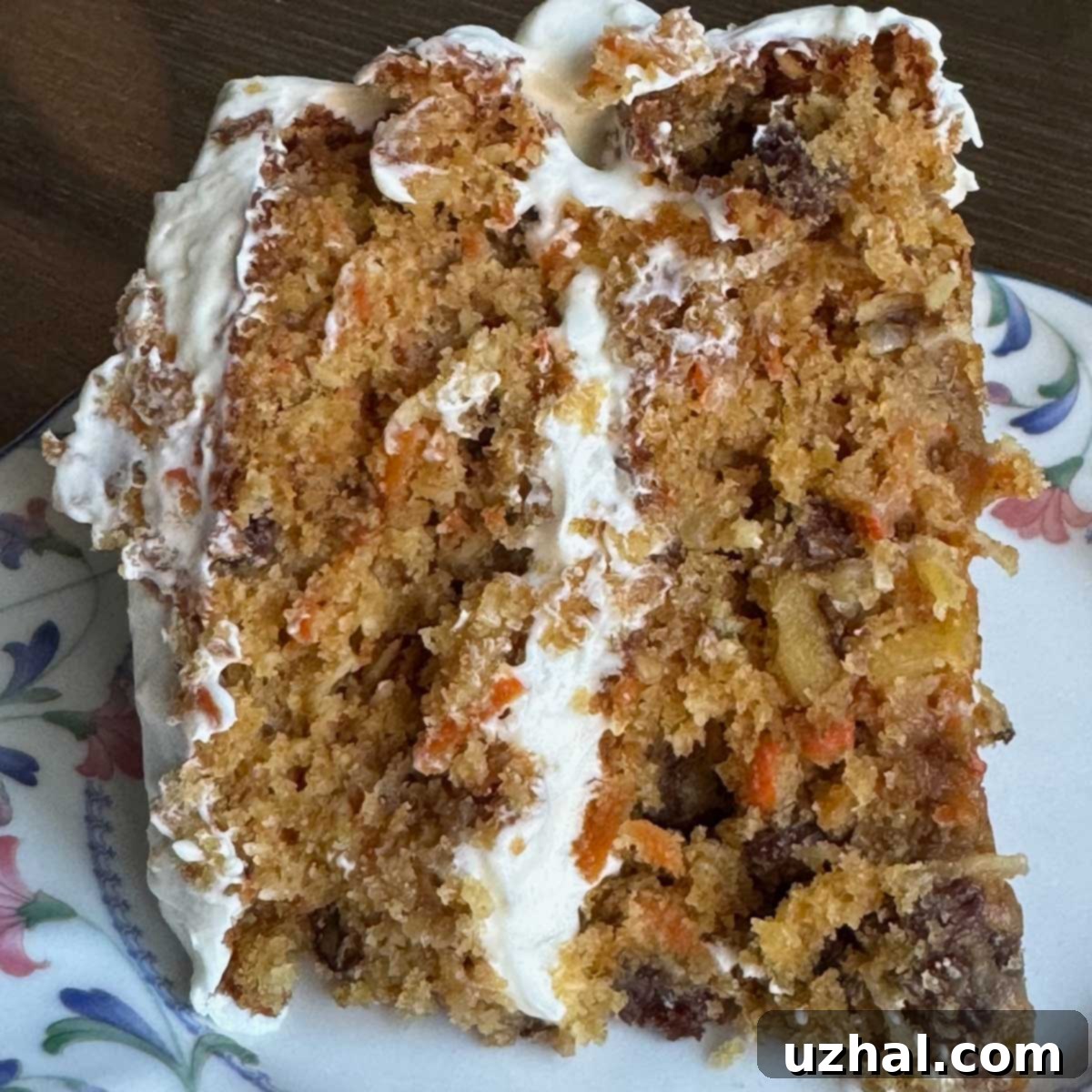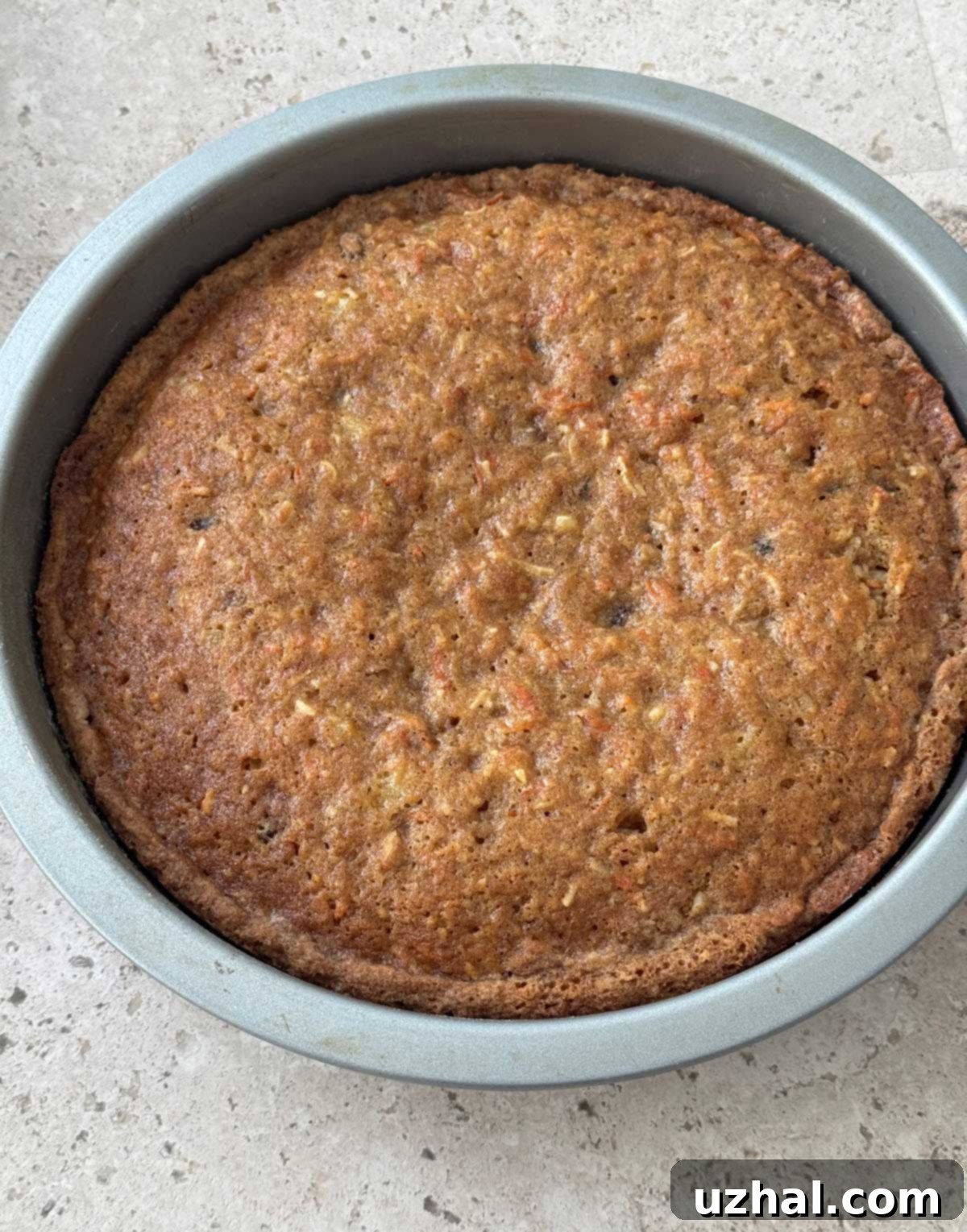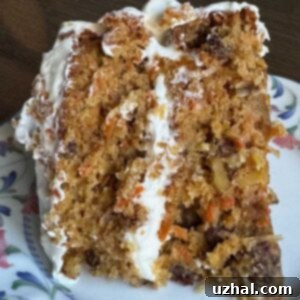The Ultimate Butter-Based Carrot Cake: A Rich and Moist Classic with Cream Cheese Frosting
This beloved carrot cake recipe has graced my kitchen for years, becoming a true staple. While affectionately known as “The Mrs. Fields’ Carrot Cake” in my early baking days, it has evolved significantly from its original inspiration by Debbie Fields. Over time, I’ve made so many adjustments and refinements that it’s now truly my own, though the nostalgic name persists. Unlike many modern carrot cake recipes that rely on oil for moisture, this particular version celebrates the luxurious richness of **butter**, creating a distinct flavor and texture that I believe elevates it to another level of indulgence. It’s a foundational recipe that consistently delivers a moist, flavorful cake, perfect for any occasion.

A Celebration of Flavor: The “Everything” Style Carrot Cake
This isn’t just a carrot cake; it’s an “everything style” carrot cake, brimming with a harmonious blend of textures and tastes. For me, a true carrot cake experience includes a medley of walnuts, raisins, pineapple, and coconut. Each ingredient plays a crucial role, contributing to the cake’s complex flavor profile and irresistible moisture. I’m quite firm about including these elements – I rarely make this cake if any are missing, save for the coconut. While delicious with coconut, the cake truly shines even without it. However, the **pineapple** is a non-negotiable component. Its natural acidity and juicy sweetness are vital, not only for flavor but also for a crucial chemical reaction within the batter. The juices released from the crushed pineapple interact dynamically with the baking soda, which contributes significantly to the cake’s lift and structure, as well as its unique color and density.
The **walnuts** add a delightful crunch and nutty depth, contrasting beautifully with the soft cake crumb. **Raisins** provide bursts of concentrated sweetness and a chewy texture that complements the moistness. And while the **coconut** is optional, it introduces a subtle tropical note and an additional layer of chewiness that many find appealing. This combination ensures every bite is an adventure, making it more than just a dessert, but a rich culinary experience.
The Science of Baking: A Tablespoon of Baking Soda Explained
One glance at the ingredient list might surprise you: a full tablespoon of baking soda. This may seem like an unusually large amount, but there’s a fascinating scientific reason behind it. The baking soda reacts directly with the natural acids present in the **pineapple** and the **brown sugar**. This robust reaction creates a significant amount of carbon dioxide gas, which contributes to the cake’s characteristic dark color and wonderfully dense, moist crumb. It’s this interaction that helps achieve the specific texture and visual appeal I adore in a carrot cake.
For those who prefer a lighter colored or less dense carrot cake, or if you choose to omit the crucial pineapple, you’ll need to adjust the leavening agents. In such cases, I recommend using a combination of **2 teaspoons of baking soda and 1 teaspoon of baking powder**. This alternative blend provides adequate lift while accommodating the reduced acidity in the batter, preventing any soapy taste that might arise from unreacted baking soda. However, my personal preference leans heavily towards the darker, richer hue and substantial density achieved with the full tablespoon of baking soda. You can actually see the difference in the cake pictured below; I experimented by baking two layers with the baking soda and baking powder combo and one layer solely with the baking soda. The visual difference in color and likely texture between the layers is subtle but noticeable, demonstrating the impact of this particular ingredient choice. The deep, caramelized color adds to the cake’s rustic charm and intense flavor.

The Unique Mixing Method: Achieving a Dense and Moist Crumb
To achieve this cake’s signature dense and satisfyingly heavy texture, we employ a slightly unconventional mixing method. It bears similarities to the classic two-stage method, but with a unique twist that sets it apart. The process begins by thoroughly combining all the dry ingredients in a spacious mixing bowl. This ensures that the flour, sugars, spices, and leavening agents are uniformly distributed, which is crucial for even baking.
Next, partially melted, very soft butter is introduced, along with one of the eggs. This mixture is then beaten vigorously until well combined. The purpose of adding the butter in this state, rather than fully melted or cold, is to allow it to integrate more thoroughly with the dry ingredients without developing too much gluten, which can lead to a tougher cake. The initial egg helps emulsify the mixture, creating a stable base.
Following this initial blend, the remaining eggs and other wet ingredients are added gradually. The batter is then beaten until everything is perfectly combined, but care is taken not to overmix. Overmixing can develop gluten unnecessarily, which would detract from our desired dense and tender crumb. This methodical approach ensures that the cake remains incredibly moist and dense, resisting the dryness that can sometimes plague carrot cakes. The final batter should have a rich, somewhat thick consistency, as depicted in the image below, indicating it’s perfectly prepared for baking.

Baking Options: Pan Sizes and Serving Suggestions
This versatile carrot cake recipe offers flexibility when it comes to presentation and serving size. You can effortlessly prepare it as two grand 9-inch layers, perfect for a standard family gathering or a moderately sized celebration. Alternatively, for a more elegant and taller presentation, or if you prefer smaller slices, you can divide the batter among three 8-inch layers. If opting for the three-layer version, remember that you’ll need to increase the cream cheese frosting recipe by one and a half times to ensure ample coverage and a generous filling between each layer.
For those planning a more intimate occasion or simply craving a smaller cake, the recipe is easily adjustable. You can make two-thirds of the original recipe and bake it in two 8-inch pans, yielding a lovely scaled-down version. While I haven’t personally tested a 6-inch layered cake yet, I’m confident that half of this recipe would perfectly fit into two 6-inch round cake pans, making it ideal for a small indulgence or a special anniversary. Always ensure your pans are properly greased and floured, or lined with parchment paper, to prevent sticking and guarantee a clean release.
This cake is renowned for its exceptional moisture and the depth of flavor imparted by the generous amount of butter. While I’m a staunch advocate for butter-based cakes, it’s worth noting that many fantastic oil-based carrot cakes exist, often deriving intense flavor from a robust blend of spices. There are even delightful variations made with alternative sweeteners like honey and maple syrup. Each offers a unique experience, but this particular butter-rich recipe holds a special place in my heart. Beyond carrot cake, another personal favorite from my collection is the Divorce Cake, a testament to the diverse world of baking.
Related Baking Adventures
If you enjoy this recipe and are looking for more baking inspiration, explore some of my other delightful creations:
- Mrs. Fields Cinnamon Sugar Butter Cookies
- Magic Cookie Cheesecake Bars
- Mrs. Fields’ White Chocolate Bundt Cake
- Two Layer Chocolate Carrot Cake
- Cook’s Illustrated Fluffy Yellow Cake — Best Yet!
Recipe: Mrs. Fields’ Butter-Based Carrot Cake

Mrs. Fields’ Carrot Cake
Anna
Pin Recipe
Ingredients
For the Carrot Cake
- 2 ½ cups all-purpose flour (330 grams)
- 1 tablespoon baking soda
- 1 ½ teaspoons cinnamon
- ¼ teaspoon salt (increase to ¾ teaspoon if using unsalted butter)
- 1 cup granulated sugar (200 grams)
- 1 cup light brown sugar (200 grams)
- 3 sticks salted butter, very soft, almost melted (12 oz / 340g)
- 1 teaspoon vanilla extract
- 3 large eggs (150 grams)
- 3 cups grated carrots (shred then chop for finer pieces)** (300 grams)
- ⅔ cup sweetened flaked coconut or ½ cup unsweetened (optional)
- ½ cup drained crushed pineapple, measured after draining
- 1 cup raisins
- 1 cup chopped walnuts
Cream Cheese Frosting
- 16 ounces softened cream cheese, full-fat recommended
- 4 ounces unsalted butter, softened
- 1 pinch salt
- 2 teaspoons vanilla extract
- 2-3 cups powdered sugar, sifted
- 1 tablespoon fresh lemon juice
Instructions
-
This initial step is entirely optional but highly recommended for enhanced flavor and plumpness: if you are using raisins and pineapple, consider soaking the raisins in the drained pineapple juice for approximately one hour before you begin baking. If pineapple juice is unavailable or undesirable, soaking them in warm water will also achieve a similar plumping effect.
-
Preheat your oven to 350 degrees F (175 degrees C). Prepare your cake pans by thoroughly greasing and flouring two 9-inch round cake pans or three 8-inch round cake pans. Ensure an even coating to prevent sticking.
-
In a large mixing bowl, combine the flour, baking soda, salt, cinnamon, granulated sugar, and light brown sugar. Whisk these dry ingredients together thoroughly until they are uniformly blended. If using a stand mixer, attach the paddle and mix on low speed for optimal incorporation.
-
Add the very soft (almost melted) butter, one large egg, and the vanilla extract to the dry ingredient mixture. Begin blending with an electric mixer on low speed until just combined. Increase the speed to medium and beat for precisely one minute. Stop the mixer and use a rubber spatula to scrape down the sides of the bowl, ensuring all ingredients are incorporated. Add the remaining two eggs, one at a time, beating for 30 seconds after each addition until smooth.
-
Fold in the grated carrots, drained crushed pineapple, soaked raisins, and chopped walnuts. Mix on medium speed only until all these wet and chunky ingredients are thoroughly combined and evenly distributed throughout the batter. Be careful not to overmix at this stage.
-
Evenly pour the prepared batter into your greased and floured cake pans. Use a rubber spatula to smooth the surface of the batter in each pan. Bake in the center of the preheated oven for approximately 35 minutes. The cake is done when a toothpick inserted into the center of a layer comes out clean. Allow the cakes to cool in their pans on a wire rack for 15 minutes before inverting them onto the rack to cool completely to room temperature.
-
While the cakes are cooling, prepare the rich cream cheese frosting. In a clean mixing bowl, beat the softened cream cheese until it is exceptionally smooth and free of lumps. Add the softened unsalted butter and continue to beat until the mixture is light, smooth, and creamy. Incorporate the pinch of salt, vanilla extract, and gradually add the sifted powdered sugar. Using the whisk attachment of a stand mixer, beat the frosting on high speed for about two minutes. This will aerate the frosting, making it wonderfully light and fluffy. Finish with a tablespoon of fresh lemon juice for a bright, tangy counterpoint.
-
Once the cake layers are completely cool, spread a generous amount of cream cheese frosting over the first layer. Carefully place the second layer on top, and if applicable, repeat with the third layer. Finally, frost the top and sides of the entire cake, creating a beautiful and even coating. Store the finished carrot cake in the refrigerator until you are ready to serve to maintain its freshness and frosting stability.
Notes
